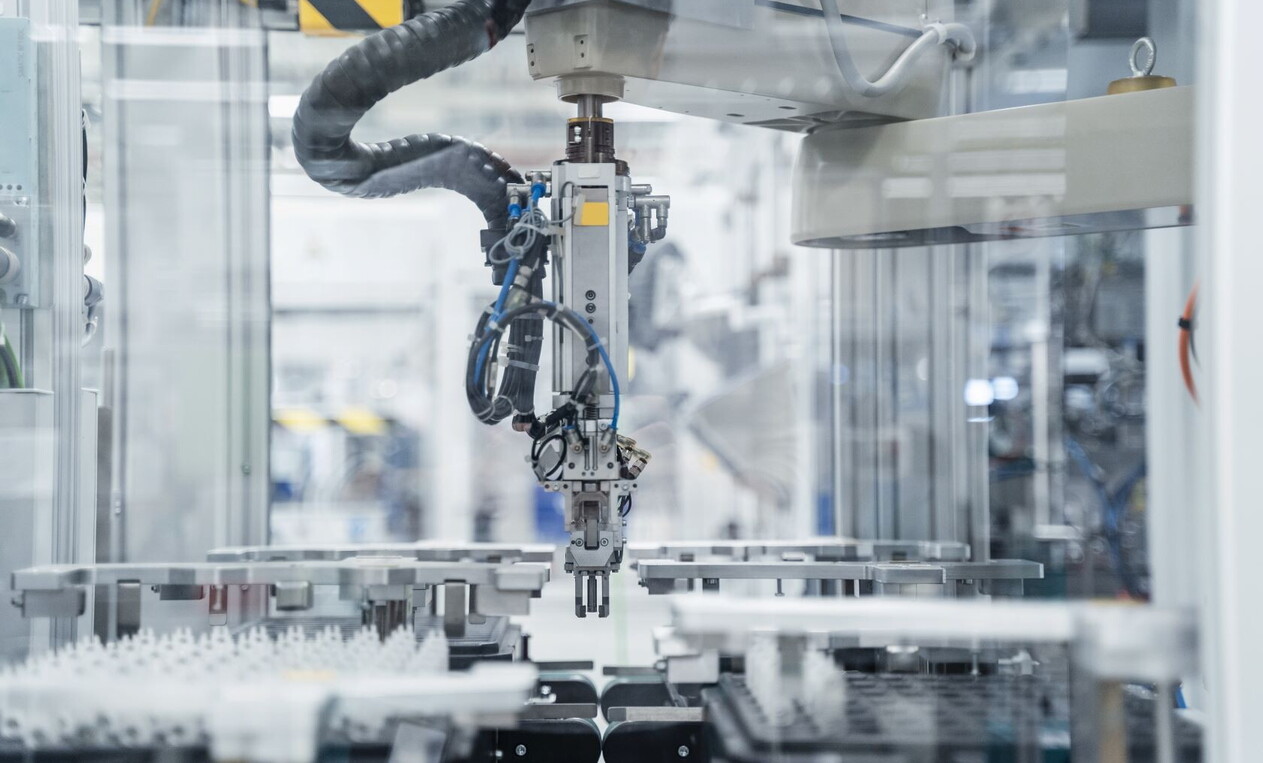
The word to the OECD
Financing industry’s net-zero transition
Aligning the industrial sector with net zero targets requires a substantial increase in investments in low-carbon technologies along the value chain. This will take rapid and bold action from all stakeholders: governments, industrial operators, and financial institutions.
9 minN
et-zero emission targets can only be met if efforts to decarbonize industry succeed. In 2022, the global manufacturing industry emitted around 16 gigatonnes of carbon dioxide, the primary greenhouse gas driving global warming and climate change. This accounts for approximately 40 percent of total global energy-related carbon dioxide emissions. Aligning the industrial transition with net-zero emission pathways is crucial to achieving the objectives of both the Paris Agreement and the UAE Consensus reached at the 28th UN Climate Change Conference of Parties (COP28) in December 2023. This will require swift and bold action from all stakeholders: governments, industry actors, and financial institutions.
In 2023, global production included 1.9 gigatonnes of crude steel, 4.1 gigatonnes of cement, around 400 million tonnes of plastics, and more than 180 million tonnes of ammonia, the main feedstock for fertilizers. Emissions from these sectors represent the lion’s share of total industrial emissions, and their mitigation is critical for the industry's net-zero transition. Renewables and electrification are only partial solutions for these sectors, which will require deep decarbonization technologies such as clean hydrogen or carbon capture.
Triple the investments
Recent OECD analysis points to the massive investment scale-up needed for low-carbon technologies across the industry value chain. According to the International Energy Agency (IEA), global annual average energy-related capital investment in the decarbonization of the industry sector was USD 158 billion between 2016 and 2020. These investments need to double by 2030 and triple by 2050, reaching around USD 500 billion per year, which represents slightly more than 10 percent of the total investments needed to put the entire energy system on a net-zero pathway. This corresponds to USD 10-15 trillion in cumulative investments in energy technologies required for the industry sector to achieve net-zero emissions by 2050. Additionally, investment in existing and new chemicals, cement, and basic metals production assets needs to increase fivefold by 2030.
Realizing the required infrastructure investments and closing the financing gap will also be critical to ensure emerging markets and developing economies (EMDEs) are competitive and better integrated with industry value and supply chains. The challenge is not only the scale of these investments but also better targeting. Production of emission-intensive materials such as steel and cement is increasing in EMDEs, as industrial production drives economic growth. Moreover, some EMDEs could benefit from their large renewable resources to build additional production capacity and become major exporters of internationally traded goods, such as steel or chemicals. Beyond domestic considerations, the international dimension is equally a driver for decarbonization, as trade-related emission-based criteria are emerging.
What should industry do?
Industry actors are key stakeholders in achieving the industrial transition and need to build credible transition plans outlining how their organizations will transform assets, operations, and business models towards a trajectory aligned with net-zero emission pathways. Sound business models are required to demonstrate sufficient return on investment and the competitiveness of low-carbon options that will enable investment decisions. New governance and partnership approaches, such as public-private partnerships of industrial clusters, may be needed to ensure that new projects are not put on hold.
However, various risks exist throughout the lifecycle of projects. In the early stages, policy and market risks are prominent and may hamper final investment decisions, especially in EMDEs. Industry actors also aim to anticipate and mitigate risks that may occur during the construction phase and operations, such as execution, technology, and operational risks.

What should governments do?
New investment decisions in manufacturing industry need to be guided by carefully crafted policies to ensure that industry growth is sustainable, competitive, and resilient. Many of the needed technologies for decarbonizing industries in EMDEs, such as clean hydrogen and carbon capture, are still in the demonstration phase or early stages of commercialization and are thus capital-intensive. Challenges such as high upfront costs and the high cost of capital in EMDEs can deter industry actors and financial institutions from investing in low-carbon projects. Sharing risks among governments, financial institutions, and industry actors will facilitate final investment decisions and help get low-carbon projects off the ground.
Governments must take a two-pronged approach: improve the enabling conditions for investments and effectively mobilize finance from all available sources—international, national, public, and private.
Sequencing is key for the successful implementation of these approaches. First, enabling conditions for investments must be improved to reduce investment risk and increase the confidence of capital providers. Policymakers must prepare a vision and clear roadmap for industry decarbonization, notably by incorporating sectoral targets and pathways into Nationally Determined Contributions. Another example is the use of sustainable finance taxonomies to ensure the alignment of projects with the country's sustainability goals. Investors can then use these to demonstrate that their investments positively contribute to decarbonization efforts.
As a next step, economic, de-risking, and financial instruments such as grants, subsidies, tax incentives, or blended finance approaches can improve the bankability of projects and attract private finance. Public finance is scarce, and EMDEs have competing priorities beyond decarbonization where public support is also urgently needed. Therefore, public finance can be a solution only in cases where its strategic use makes sense. Solutions need to be tailored to specific risks and where they can help to nudge the private sector.
Better enabling conditions can help overcome many barriers, but financial challenges still need to be addressed. Public actors financing industry decarbonization include governments, municipalities and regions, national, bilateral and multilateral development finance institutions, sovereign wealth funds, multilateral climate funds, and export credit agencies. Private finance actors include businesses, commercial banks, insurers, and other institutional investors and asset owners (such as philanthropy investors, venture capital funds, and pension funds). The involvement of these actors in financing industry decarbonization varies according to the level of maturity and deployment of technologies.
What is the OECD doing?
To assist EMDEs in developing these solutions, the OECD released its “Framework for Industry’s Net-zero Transition” in September 2022 under the Clean Energy Finance and Investment Mobilisation (CEFIM) program, as part of the Sustainable Infrastructure Programme in Asia (SIPA). Since then, the OECD has collaborated with the governments of Egypt, Indonesia, South Africa, and Thailand on several industrial subsectors (e.g., steel, petrochemicals, textiles) and cross-cutting technologies (e.g., hydrogen).
The OECD has also developed a simple map of tailored solutions to address the various financial challenges across the value chain. A combination of these de-risking and financing instruments can improve the expected economic performance of industry decarbonization projects. This map of solutions is complemented by an ongoing effort to learn from real projects through the development of case studies.
Beyond financing industry decarbonization, the OECD supports countries in several other areas. At the margins of COP28, the OECD outlined these efforts in its latest publication. Improving data availability, defining objectives, and measuring progress are central to the OECD’s climate action agenda. Additionally, organizations like the OECD can support capacity building to equip stakeholders with the necessary skills to identify, assess, and implement decarbonization opportunities. Capacity building can take the form of training programs or knowledge-sharing workshops. Organizations like the OECD will continue to play an important role in promoting collective progress and exchanges to decarbonize hard-to-abate industry sectors.
* Taxonomies are definitions of sustainable finance that aim to be
comprehensive classification system.

